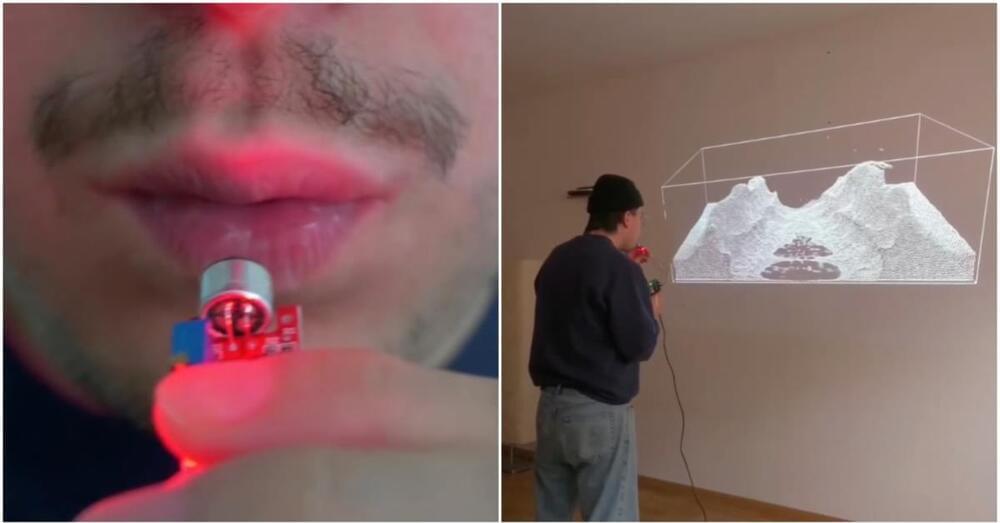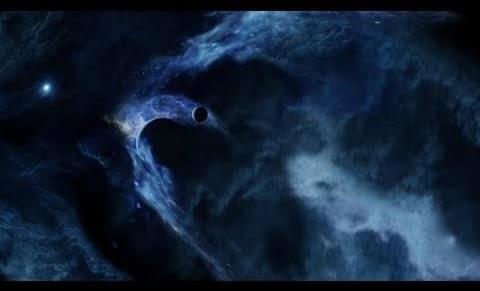May 22, 2024
Report: Apple Met With TSMC to Secure All of Its Upcoming 2nm Capacity
Posted by Shailesh Prasad in category: futurism
Apple could once again be hoping to lock its competitors out of the market, at least for a little while.
Apple could once again be hoping to lock its competitors out of the market, at least for a little while.

In February, we covered a curious setup that allows you to control digital particles in real time by blowing air into a sensor, created by visual artist Steven Mark Kübler. But what if you had a whole museum of such unusual interactive artworks?
This is what Kübler has been wondering as well. He presented a concept of a room filled with sound paintings manipulated with viewers’ actions. You can see him blowing on the sensor to make particles in a tank-like container splash and part like water. The experience was created using Arduino’s controller and the TouchDesigner visual development platform.
In this pivotal Spring 2024 edition of “The Xsolla Report: The State of Play,” Xsolla delves into the evolving dynamics and innovations shaping our industry, emphasizing the burgeoning realm of mobile gaming.
TSMC has started producing Tesla’s next-generation Dojo AI training tiles with its InFO_SoW (Integrated Fan-Out System-on-Wafer) technology, aiming for a 40x increase in computing power by 2027 with a more complex wafer-level system, according to company sources.

An exploration of the various Dyson sphere and swarm concepts and their practicality. My Patreon Page: / johnmichaelgodier My Event Horizon Channel:
/ eventhorizonshow Music: Cylinder Eight by Chris Zabriskie is licensed under a Creative Commons Attribution 4.0 license. https://creativecommons.org/licenses/.… https://chriszabriskie.com/cylinders/ Cylinder Five by Chris Zabriskie is licensed under a Creative Commons Attribution 4.0 license. https://creativecommons.org/licenses/.… https://chriszabriskie.com/cylinders/ Space Xplorers by Kevin MacLeod is licensed under a Creative Commons Attribution 4.0 license. https://creativecommons.org/licenses/.… http://incompetech.com/music/royalty–… Darkest Child by Kevin MacLeod is licensed under a Creative Commons Attribution 4.0 license. https://creativecommons.org/licenses/.… http://incompetech.com/music/royalty–… Intermission in D by Miguel Johnson https://migueljohnson.bandcamp.com/

Continuing our look at Dyson Spheres we examine the concept of the Nicoll-Dyson Beam, a type of advanced weapon that uses the output of an entire sun to create a laser that can strike target across the galaxy.
The search for life beyond Earth is really just getting started, but science has an encouraging early answer: there are plenty of planets in the galaxy, many with similarities to our own. But what we don’t know fills volumes. Observations from the ground and from space have confirmed thousands of planets beyond our solar system.
While silicon has been the go-to material for sensor applications, could polymer be used as a suitable substitute since silicon has always lacked flexibility to be used in specific applications? This is what a recent grant from the National Science Foundation hopes to address, as Dr. Elsa Reichmanis of Lehigh University was recently awarded $550,000 to investigate how polymers could potentially be used as semiconductors for sensor applications, including Internet of Things, healthcare, and environmental applications.
Illustration of an organic electrochemical transistor that could be developed as a result of this research. (Credit: Illustration by by Ella Marushchenko; Courtesy of Reichmanis Research Group)
“We’ll be creating the polymers that could be the building blocks of future sensors,” said Dr. Reichmanis, who is an Anderson Chair in Chemical Engineering in the Department of Chemical and Biomolecular Engineering at Lehigh University. “The systems we’re looking at have the ability to interact with ions and transport ionic charges, and in the right environment, conduct electronic charges.”
In a study published in Nature Materials, scientists from the University of California, Irvine describe a new method to make very thin crystals of the element bismuth—a process that may aid the manufacturing of cheap flexible electronics an everyday reality.

Watch Project Astra factorise a maths problem and even correct a graph. All shot on a prototype glasses device, in a single take in real time.
Project Astra is a prototype that explores the future of AI assistants. Building on our Gemini models, we’ve developed AI agents that can quickly process multimodal information, reason about the context you’re in, and respond to questions at a conversational pace, making interactions feel much more natural.
Continue reading “Project Astra demo | Solving math problems” »
